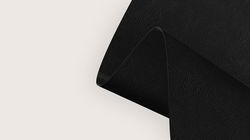 |  |  |
|---|---|---|
 |  |  |
Introducing ELEC 3030RF Systems Lab 4
AM Detector
Chapter 4 Objectives
-Understand a simple diode detector circuit
and
analyze it with LTspice
-Understand a biased diode detector circuit and
analyze it with LTspice
-Analyze a complementary feedback pair (CFP)
detector with LTspice
-Breadboard and
test simple diode detector,
biased diode detector, and CFP detector circuits
-Add your chosen detector circuit to your radio’s
audio amplifier and test

The first section we had to build a simple Am detector. We had a carrier frequency of 200 kHz and the intelligence frequency to 1kHz and set the internal modulation to 50% modulation. After using the dual channel feature I was able to see the input and output signals at the same time. My detector worked best when my input voltage level was super high.
The next part of this lab we built a biased diode detector circuit to improve the output signal. Connecting this AM detector to the CE-CC audio amp gave me an output signal that was half a sine wave and instead of going downwards it went straight.


The last part of this lab we built the CFP detector. I was only able to build the circuit and get an output on the oscilloscope. Due to time I could not complete tables 1 and 2.
Pictures
AM Dectectors




simple rectifier circuit
simple AM detector with R1= 10 ohms
simple AM detector with R1= 1k ohms
simple AM detector with R1=10k ohms


biased diode detector output
CFP detector
Reflective Writing
LAB 4
Overall I think this lab was a success but I did not completely finish it due to problems earlier in the lab. After lab 3 and 4 I have decided to go with the CE-CC audio amp and the biased AM detector. I had trouble getting an output signal because the only way anything showed up is if the input voltage was at 700 mVpp which was different than the directions.
